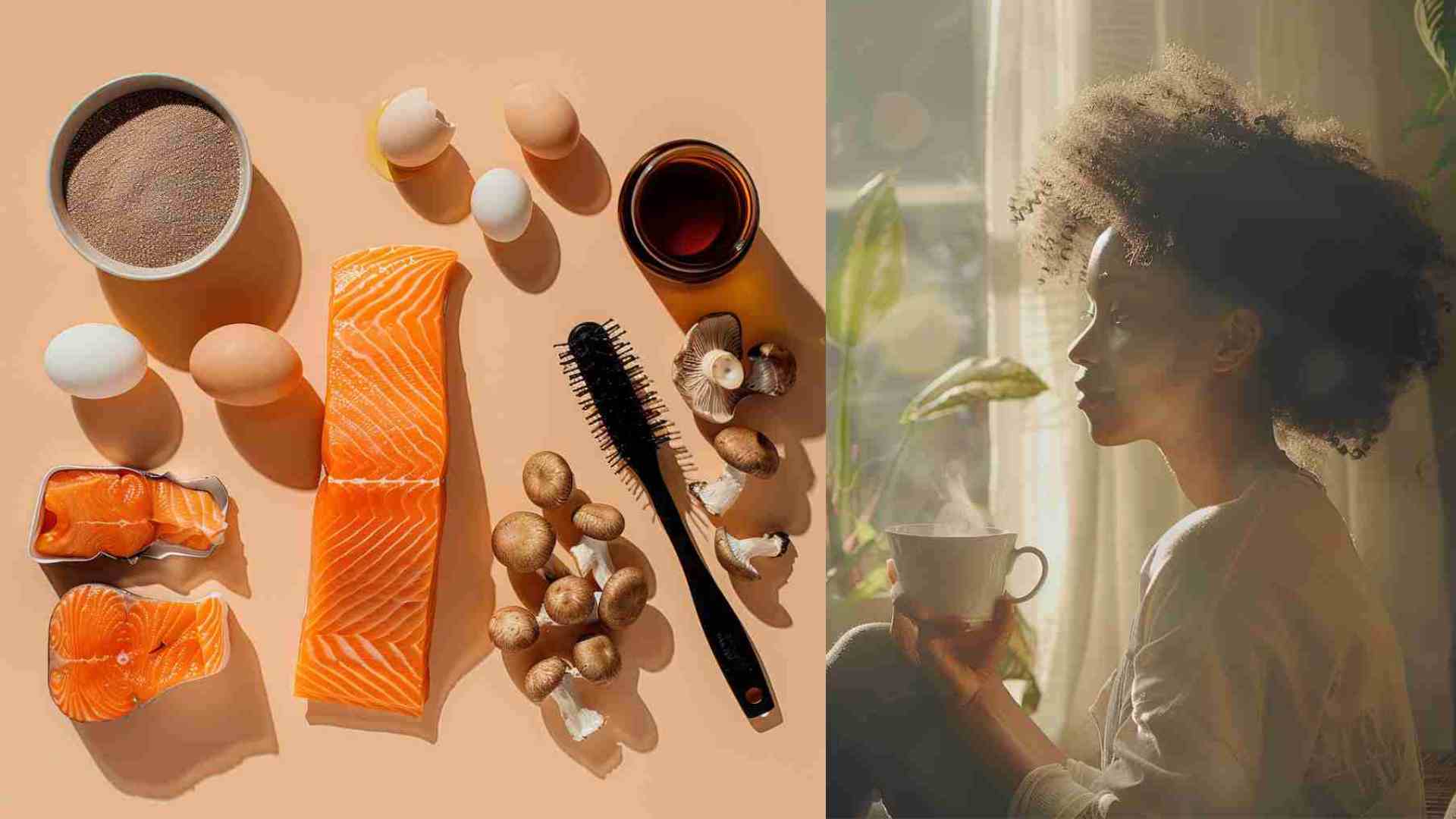Hair loss can be a distressing experience for many women, often impacting their self-esteem and overall well-being. Among the various factors that contribute to hair loss, vitamin D deficiency has gained attention as a potential cause. This article explores the relationship between vitamin D and hair loss, focusing on natural treatments that can enhance hair health. We’ll delve into five effective treatments, detailing their benefits, how to use them, and potential side effects.
Understanding Vitamin D and Hair Loss
Vitamin D is a fat-soluble vitamin that plays a crucial role in various bodily functions, including calcium absorption and immune system regulation. Emerging research indicates that vitamin D may also be vital for hair follicle cycling and hair growth.
Women experiencing hair loss may often find that their vitamin D levels are lower than optimal. A study published in the Journal of Investigative Dermatology revealed a correlation between vitamin D receptor (VDR) expression and hair follicle health. When VDRs are activated by vitamin D, they promote the growth of hair follicles and may even help in the reactivation of dormant follicles, which can lead to hair regrowth.
1. Sun Exposure
How to Use:
The most natural way to boost your vitamin D levels is through sun exposure. Spending about 10 to 30 minutes in the sun several times a week can significantly increase your vitamin D synthesis, depending on skin type, geographic location, and the time of year. For fair-skinned individuals, shorter exposure is needed, while those with darker skin may require longer periods to produce adequate vitamin D.
Benefits:
- Increases vitamin D levels naturally.
- May enhance mood and energy levels, contributing to overall well-being.
Side Effects:
- Overexposure to the sun can lead to skin damage and increase the risk of skin cancer. Always use sunscreen if you’re going to be exposed for longer periods.
2. Vitamin D-Rich Foods
How to Use:
Incorporating foods high in vitamin D into your diet can help improve your levels. Some vitamin D-rich foods include:
- Fatty fish (salmon, mackerel, sardines)
- Cod liver oil
- Fortified foods (milk, orange juice, cereals)
- Egg yolks
- Mushrooms exposed to sunlight
Aim to include these foods in your diet several times a week to maintain healthy vitamin D levels.
Benefits:
- Provides essential nutrients for hair health.
- Supports overall health, including bone density and immune function.
Side Effects:
- Excessive intake of vitamin D from supplements can lead to toxicity, which can result in nausea, vomiting, weakness, and serious complications like kidney damage. Always consult a healthcare provider before making significant dietary changes or starting supplements.
3. Vitamin D Supplements
How to Use:
Vitamin D supplements are a convenient way to ensure adequate intake, especially in those who have limited sun exposure or dietary restrictions. They come in two forms: D2 (ergocalciferol) and D3 (cholecalciferol), with D3 being more effective at raising and maintaining overall levels. The typical dosage is 600-800 IU for adults, but higher doses may be necessary for those with diagnosed deficiencies, which should be guided by a healthcare professional.
Benefits:
- Directly increases vitamin D levels, which can lead to improved hair growth.
- May also enhance mood and immune function.
Side Effects:
- Potential side effects include gastrointestinal discomfort, headache, and hypercalcemia (high calcium levels) if taken excessively. Regular blood tests are advised to monitor levels if you are on supplementation.
4. Topical Vitamin D Treatments
How to Use:
Topical treatments such as vitamin D creams or lotions can be applied directly to the scalp. These products often contain calcipotriene, a synthetic derivative of vitamin D, which may help stimulate hair follicles. It’s recommended to apply these treatments as directed, usually once daily.
Benefits:
- Localized treatment may enhance follicle health and promote hair regrowth.
- Minimal systemic side effects since the application is localized.
Side Effects:
- Possible skin irritation or allergic reactions. A patch test is advisable before widespread use.
5. Scalp Massage with Vitamin D Oil
How to Use:
Using oils fortified with vitamin D (such as cod liver oil) can be beneficial when massaged into the scalp. To use, warm a small amount of oil and gently massage it into your scalp using circular motions for about 10-15 minutes, 2-3 times a week. This not only helps in delivering vitamin D to the hair follicles but also increases blood circulation, which is beneficial for hair growth.
Benefits:
- Combines the benefits of vitamin D with increased blood flow to the scalp, promoting healthier hair follicles.
- May reduce stress, which is another factor in hair loss.
Side Effects:
- Oily residue may remain on the hair and scalp, requiring thorough washing afterward.
Conclusion
Vitamin D plays a pivotal role in maintaining hair health, and its deficiency can lead to hair loss in women. By incorporating natural treatments such as sun exposure, dietary changes, supplements, topical applications, and scalp massages, women can potentially enhance their vitamin D levels and promote hair growth.
However, it’s essential to approach these treatments with caution, understanding the potential side effects and consulting with a healthcare professional when necessary. Maintaining balanced vitamin D levels can not only contribute to healthier hair but also improve overall health and well-being.
If you’re facing hair loss issues, consider assessing your vitamin D levels and exploring these natural treatment options for a holistic approach to hair care.
Please share this Vitamin D Natural Treatment for Hair Loss Female with your friends and do a comment below about your feedback.
We will meet you on next article.
Until you can read, Protein-Rich Foods Natural Treatment for Hair Loss Female
